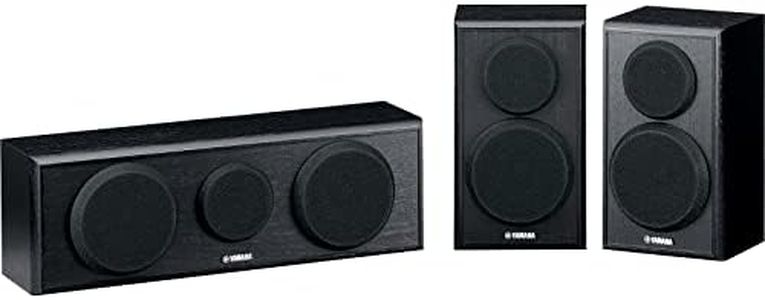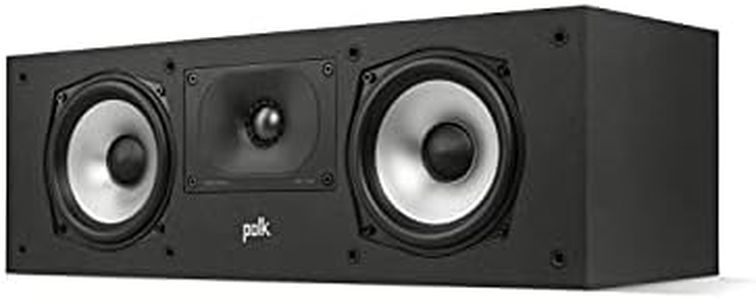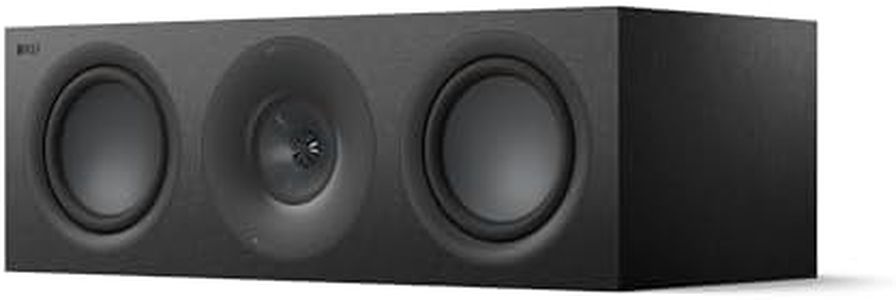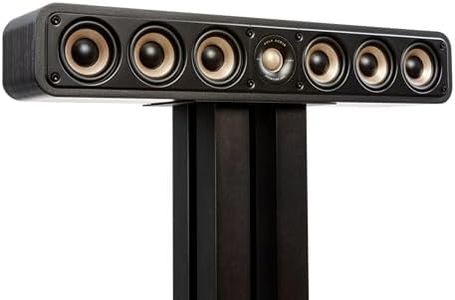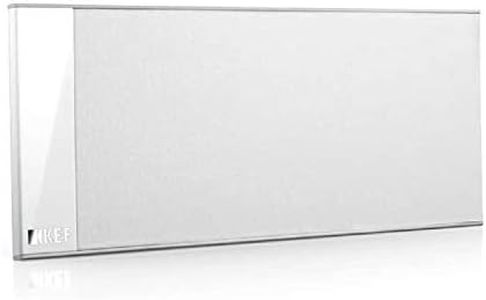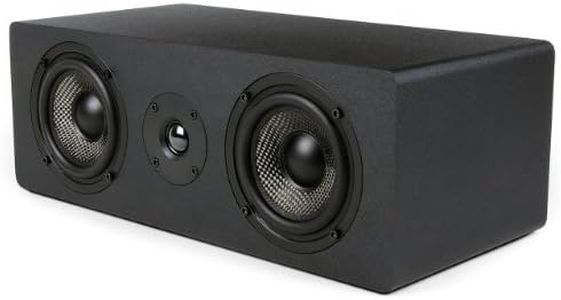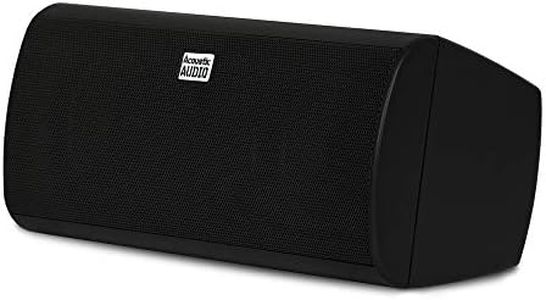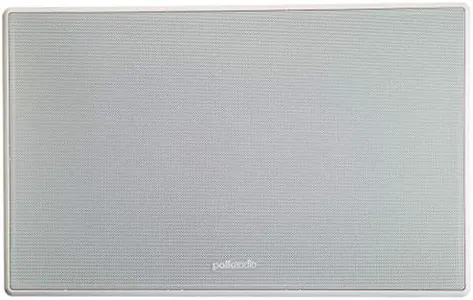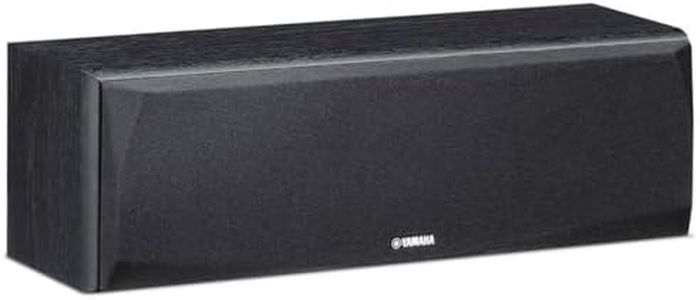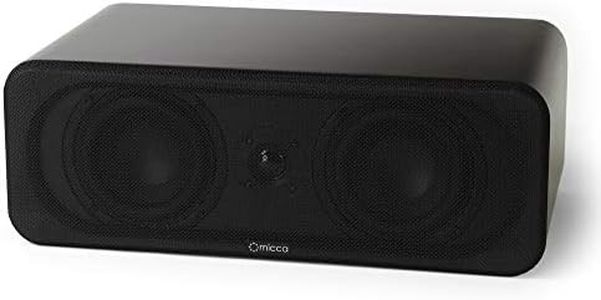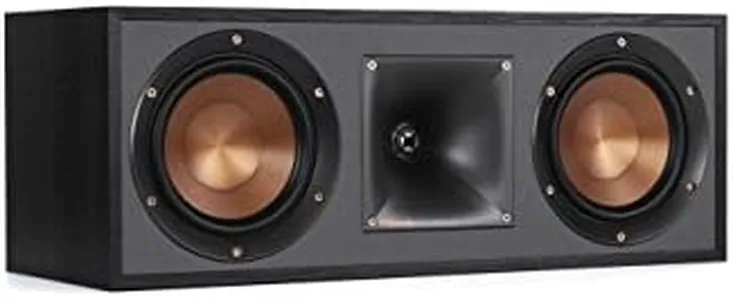We Use CookiesWe use cookies to enhance the security, performance,
functionality and for analytical and promotional activities. By continuing to browse this site you
are agreeing to our privacy policy
10 Best Center Speakers
From leading brands and best sellers available on the web.Buying Guide for the Best Center Speakers
Choosing the right center speaker is important because it handles most dialogue and central sounds in movies, TV, and even some music. A good center speaker makes voices clearer and improves your overall home theater experience. When selecting a center speaker, you should think about your room size, the rest of your audio system, how and where you’ll place it, and what kind of sound experience matters most to you.Speaker Size and DesignSpeaker size and design refer to the physical dimensions and style of the center speaker. This is important because a larger speaker can often produce deeper, fuller sound, while a smaller one is usually easier to fit into tight spaces. If you have a large room or sit far from the speaker, a bigger design may help fill the space with sound. On the other hand, if your area is small or you prefer a more subtle look, a compact design may be a better choice. Think about how much space you have and whether the speaker will fit well under your TV or in your entertainment center.
Number of DriversDrivers are the parts inside the speaker that actually create sound, and a center speaker can have two, three, or sometimes more. More drivers often mean the speaker can handle a wider range of sounds, leading to clearer dialogue and better music detail. Basic models might use just two drivers, which work fine for smaller setups. Three-driver or more setups can separate the different parts of the sound for better clarity, which is great if you want the crispest voices and effects. If your system is for casual watching, fewer drivers are acceptable, but for home cinema enthusiasts, more is usually better.
Frequency ResponseFrequency response describes the range of sounds, from the lowest bass to the highest treble, that the speaker can produce. A wider frequency response means the speaker can play a broader range of sounds, which results in richer, more lifelike audio. A basic center speaker might focus mostly on mids (where most dialogue sits), while high-end speakers reach lower and higher frequencies for extra detail. If your main use is dialog-heavy content, mids are most important, but for action movies or music, a wider frequency range adds realism and excitement.
Power HandlingPower handling is how much power (measured in watts) the speaker can handle from your amplifier without getting damaged or distorting the sound. Some speakers are designed for smaller living rooms and need less power, while others are made to handle much more for bigger rooms or higher volumes. It’s important to match your speaker’s power handling with your amplifier’s output; too little, and you may not get enough volume or clarity; too much can risk damage or distortion. Think about how loud you like your audio and how big your space is when deciding.
Impedance and SensitivityImpedance (measured in ohms) and sensitivity (measured in decibels) affect how easily the speaker works with your amplifier or receiver. Lower impedance means the speaker draws more power, while higher sensitivity means the speaker gets louder with less power. Most home systems use speakers with 6-8 ohm impedance and sensitivity between 85-92 dB. If you have a low-powered amplifier, a more sensitive speaker makes sense since it will play louder with less effort. For most users, standard values are fine, but always check your amplifier's recommendations.
Tone and Voice MatchingTone or voice matching is about the speaker’s sound character fitting well with your left and right front speakers. If your center speaker sounds very different, it can make dialogue and effects seem unnatural or disconnected. If possible, try to choose a center speaker from the same brand or series as your other front speakers, or one designed to have a similar sound. This ensures a consistent sound 'across the front' when objects or voices move on screen, making your experience more immersive.
Placement and Mounting OptionsPlacement and mounting options refer to how and where you can put your center speaker. Some are designed to sit on shelves, under TVs, or can be mounted on the wall. This is key not only for aesthetics but for sound quality: the center speaker should be as close to ear level as possible and centered below or above your TV. Consider where you plan to place it and check that the speaker’s design fits your available space.
